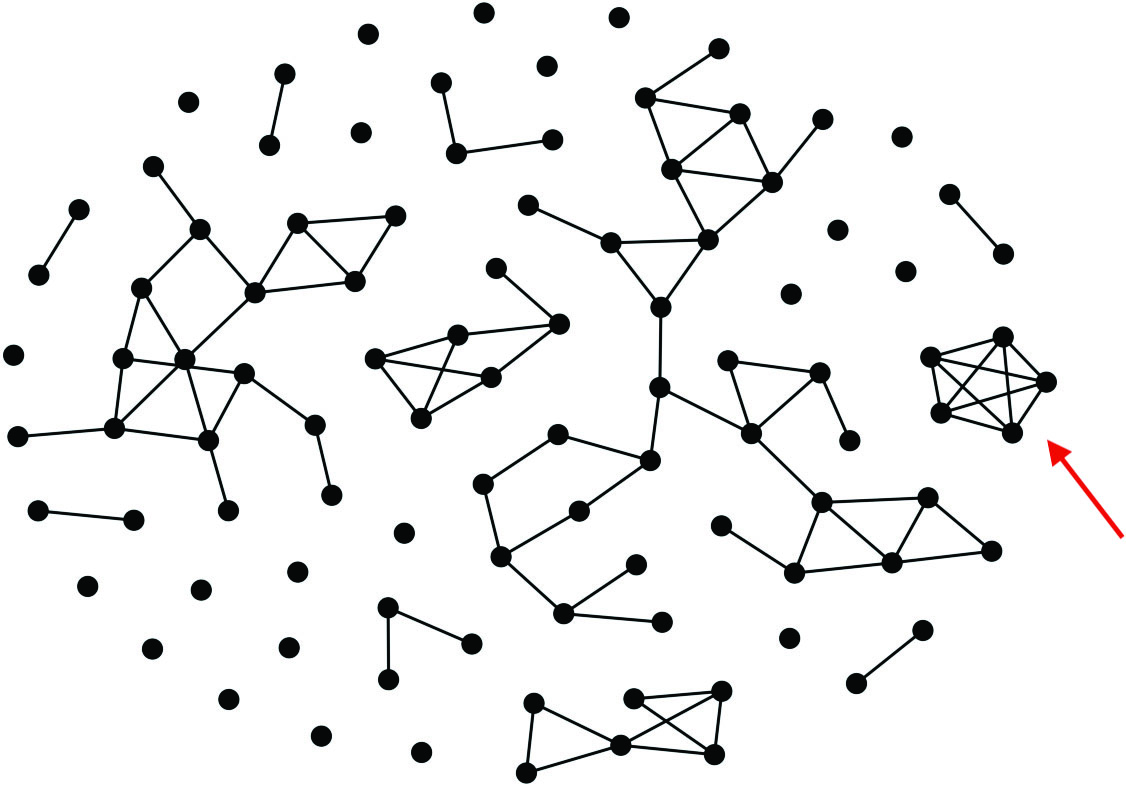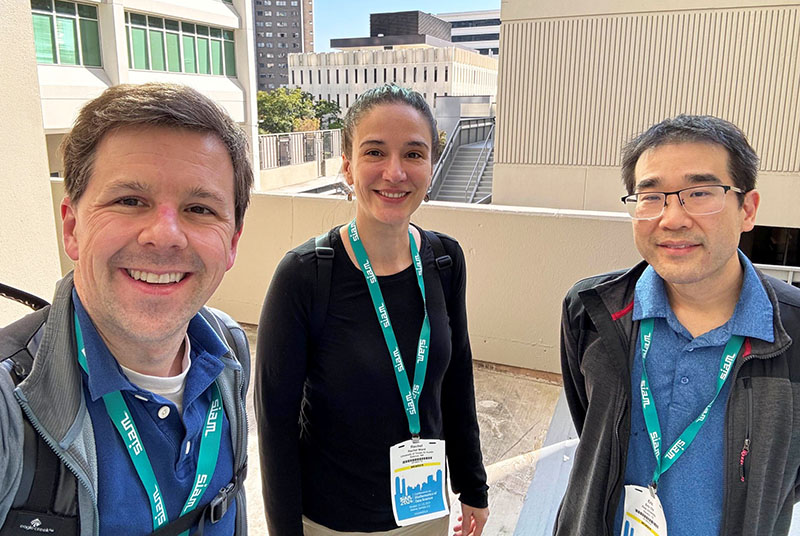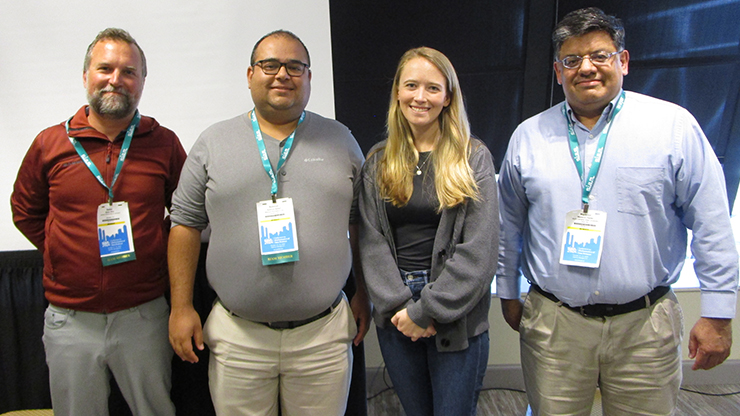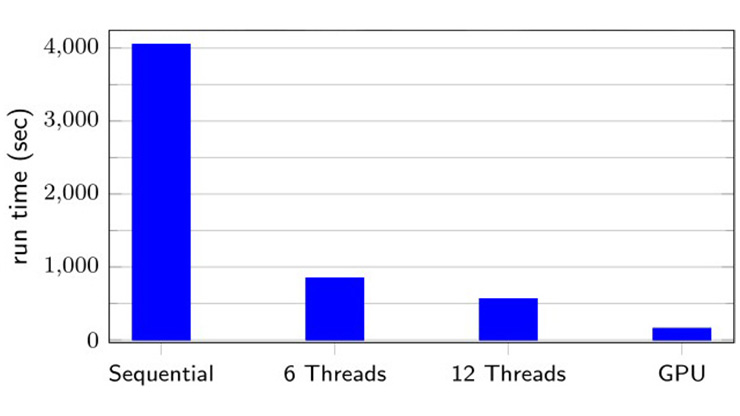Artificial Intelligence Tools Facilitate MDS24 Conference Scheduling
The 2024 SIAM Conference on Mathematics of Data Science (MDS24), which took place last October in Atlanta, Ga., was organized a bit differently than most SIAM conferences. As co-chairs of the Organizing Committee, we chose to heavily emphasize posters to increase participation while avoiding multi-session parallelism. In addition to roughly 100 minisymposia, MDS24 hence featured approximately 600 posters across five different poster sessions — the most of any SIAM conference to date. We connected the minisymposia and poster sessions by requiring that each minisymposium also have a set of four associated posters. This condition added a new level of complexity to the configuration.
While we initially thought about relying on artificial intelligence (AI) to organize much of the conference, we ultimately determined that modern AI tools are not yet capable of such a task. Nevertheless, they can certainly contribute to multiple aspects of the planning process. Here, we detail the ways in which AI tools saved us time and otherwise improved MDS24.
Key Efforts When Organizing a Conference
We received minisymposium and poster abstracts several months before the event. Members of the MDS24 Organizing Committee helped us review these submitted abstracts and assess their relevance to data science and any established themes. Next, we had to produce a schedule of sessions for each of the meeting’s five days. Although organizers often do so by moving sticky notes around a board, planners of recent conferences—including the 2023 SIAM Conference on Computational Science and Engineering (CSE23)—have begun to experiment with automated tools [1]. We implemented AI techniques to address the time-consuming parts of conference organization and enhance the meeting.
Verifying Abstract Compliance

As mentioned earlier, one significant change for MDS24 was the mandatory associated posters for each minisymposium. Given the design of SIAM’s conference system, the most pragmatic way to collect this information was to ask minisymposium organizers to list their associated posters in the minisymposium abstract. Because this requirement was different from previous SIAM conferences, we wanted to check the submissions earlier than usual to ensure compliance. This screening process marked our first employment of AI tools. Rather than rely on AI directly, we utilized ChatGPT to write a graphical user interface that read minisymposia proposals from a file and allowed us to easily flag them as compliant or not compliant (see Figure 1). We used the output of this program to generate a list of individuals with incomplete abstracts, then followed up with them.
Extracting Data to Match Posters and Minisymposia
Next, we had to match records of minisymposium submissions with associated posters. With roughly 400 items to match, this task would be exceedingly tedious by hand; however, writing a script to automate matching would also be time consuming. Although we asked submitters to adopt a common format to expedite our efforts, there was a high level of variance in everyone’s interpretation of the instructions.
A good mental model for some modern AI tools—e.g., large language models such as GPT-4, which is used in ChatGPT—is that they can serve as “fancy regular expressions” that allow users to restructure information. We thus anticipated that these tools might successfully extract poster information data from the irregular raw minisymposia text. Using the OpenAI application programming interface (API), we created a custom GPT-4 prompt to take in a minisymposium proposal and return a JavaScript Object Notation (JSON) file with a list of posters (see Figure 2 and Figure 3). This method worked like a charm and was much easier than manually crafting rules to handle all of the different ways in which this information was encoded. With poster titles in hand, we employed standard text matching tools to associate these posters with a minisymposium record and SIAM poster record.

Scheduling
We built upon the CSE23 scheduling tools that were designed by Alicia Klinvex of the Naval Nuclear Laboratory [1] to generate the MDS24 schedule. Her toolset includes a number of helpful programs that obtain submission data and identify authors with flipped first and last names — a necessary audit to avoid double scheduling. Based on conversations with Klinvex, we replaced the genetic program with an integer optimization problem for MDS24.
AI was perhaps most useful in avoiding topical overlap among minisymposia in the same time slots. For this task, we computed an embedding of each minisymposium abstract — i.e., a high-dimensional vector that represents the abstract in a vector space where a Euclidean distance between minisymposia makes sense. We easily acquired embeddings with an OpenAI API call for the text-embedding-3-large model, which simply needs the piece of text. The embeddings allowed us to evaluate a distance between minisymposia that we then used to construct a graph of potential topic overlaps. We thought of these overlaps as hard conflicts: minisymposia that should not occur at the same time. Figure 4 depicts the resulting graph of hard conflicts, each of which was encoded as a constraint in the integer program that required the two events to be scheduled at different times.

To dive a bit deeper, conflicting is actually a transitive property. For example, if we don’t want to schedule A and B at the same time and we don’t want to schedule B and C at the same time, then we also don’t want to schedule A and C at the same time. Therefore, we would ideally include an entire connected component as a conflict group. MDS24 had 10 distinct minisymposium sessions in each time slot, which meant that no more than 10 sessions could conflict with each other. The transitive expansion was hence infeasible, as some connected components of conflicts had more than 10 nodes.
To mitigate this issue, we created a soft penalty that enumerated all paths in the network and weighted them based on distance. The integer optimization problem then sought to minimize the number of soft conflicts from this path-weighted graph, along with a few small terms from the topics that the minisymposium organizers selected. Cindy Phillips of Sandia National Laboratories, who used integer optimization to schedule a previous iteration of the SIAM Conference on Parallel Processing for Scientific Computing, helped us realize that we needed to round the values to only a few distinct weights to encourage the solver to perceive “big” moves in objective space.

The integer program saved us an enormous amount of time and made it easy to add constraints, such as “ensure that people with multiple events don’t get scheduled on the first and last day.” We were able to generate a feasible schedule within about 20 minutes. The solver still hadn’t found an optimal solution after 16-18 hours (though it was still making headway), so we chose to stop the solver at that time and use the best solution it had found up to that point. With the benefit of hindsight, we now wish that we had tried a greedy improvement/swapping strategy on the final solution.
Organizing Poster Sessions
We also employed AI to organize the five poster sessions at MDS24. Again using the OpenAI API call with text-embedding-3-large, we computed embeddings for each poster abstract and then calculated a one-dimensional spectral embedding of the weighted graph of affinities between posters. Spectral embeddings attempt to minimize the energy of a spring system based on the edges at which each vertex (i.e., poster) is associated with a point on a line. Since poster sessions often follow a linear organizational setup in long rows or columns, this approach yielded a reasonable topic order to ensure that attendees who were interested in one particular poster might also be interested in nearby displays.
Reproducibility, Costs, and Ethical Implications
Following Randall LeVeque’s 2013 advice to the SIAM community [2], our rough, unedited code for these tasks is available on GitHub. These files include embeddings for the minisymposia and posters at the time they were scheduled.
We maintained a ChatGPT Plus subscription for $20.00 a month and spent between $1.00 and $2.00 in API fees for custom prompts and embeddings. Although we could have completed every MDS24 scheduling duty without the use of AI, the AI tools probably saved us 40 to 80 hours of work versus the alternative of conducting all tasks manually.
Some of the AI outputs were programs that were likely based on examples from Stack Overflow and/or GitHub. These examples may have included codes without appropriate copyright permissions.
Where AI Wasn’t Helpful

The organization of any conference necessitates a vast amount of human interaction. Contacting invited speakers (many of whom we knew personally), following up on minisymposia submissions that were missing posters, and interacting with SIAM conference staff all required timely, individualized emails, and we didn’t find AI tools to be particularly helpful with aspects that involved this type of human element.
AI to Augment Human Ability
Many AI proponents expect the technology to replace human work by automating simple tasks. An example in the context of MDS24 is our extraction of poster information from minisymposium abstracts, which worked well. However, we believe that AI tools should augment (rather than replace) human work. They enabled us to realistically pursue ambitious ideas for MDS24 by lowering the barriers to entry and execution; our use of embeddings for minisymposium topic overlap and poster organization is one such example. The complete manual optimization of poster layout is neither a practical nor resourceful use of time when organizing a SIAM conference, but AI tools allowed us to efficiently try. AI technology augmented and enhanced our efforts to improve MDS24, and we encourage future conference organizers to experiment with similar methods.
Acknowledgments: We are extremely grateful to Alicia Klinvex, who helped us set up the initial integer optimization model and provided tools to manage minisymposium data from SIAM. We also thank Cindy Phillips for answering our questions about IP formulations and Tammy Kolda for providing initial feedback to this article. Finally, we acknowledge the SIAM conference staff for all of their help throughout the MDS24 planning process.
References
[1] Klinvex, A., & Kolda, T. (2023, November 1). Automating conference scheduling with genetic algorithms at CSE23 and beyond. SIAM News, 56(9), p. 7.
[2] LeVeque, R.J. (2013, April 1). Top ten reasons to not share your code (and why you should anyway). SIAM News, 46(3), p. 8.
About the Authors
Eric C. Chi
Associate professor, Rice University
Eric C. Chi is an associate professor of statistics at Rice University who contributes to statistical learning and optimization techniques. His research spans high-dimensional data analysis, machine learning, and applied mathematics.

David F. Gleich
Professor, Purdue University
David F. Gleich is a professor of computer science at Purdue University who specializes in matrix and graph algorithms with applications in network science and data analysis. His work focuses on scalable computational methods for complex systems.

Rachel Ward
Professor, University of Texas at Austin
Rachel Ward is a professor of mathematics at the University of Texas at Austin with expertise in optimization, machine learning, and computational mathematics. Her research addresses foundational challenges in data science and signal processing.
In keeping with the theme of the article, these biographies were generated by ChatGPT (with light edits by SIAM News staff).
Stay Up-to-Date with Email Alerts
Sign up for our monthly newsletter and emails about other topics of your choosing.






